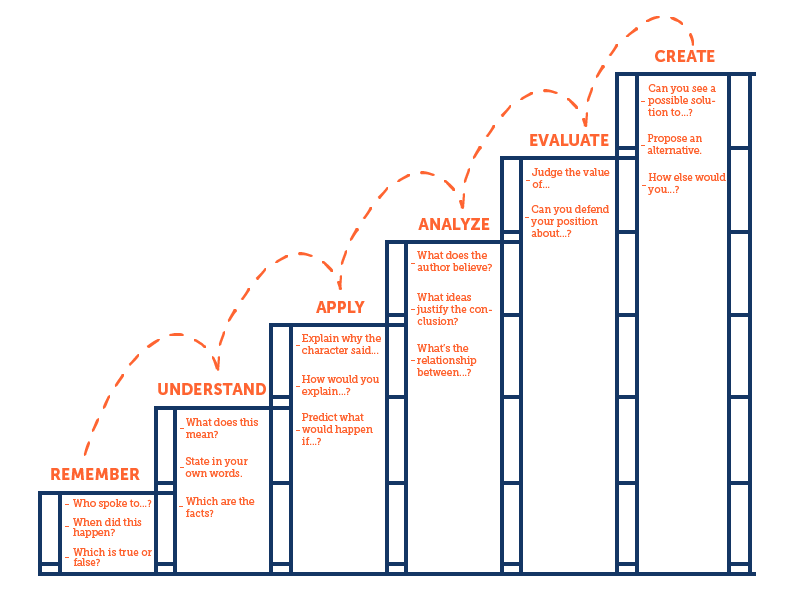Teachers ask students roughly 300-400 questions every day. With so much of your time spent asking questions to students, it’s important to plan thoughtful, open-ended questions in order to make the most of these interactions. Questioning may seem easy, but there is an art to crafting questions that will not only stir discussion and push student thinking, but that will also develop students’ higher-order, critical-thinking skills. A great place to start is by creating question stems.
What are Question Stems and How Can I Use Them?
Question stems are the beginnings to open-ended questions. The best question stems range in rigor and provide a strong scaffold for student learning by moving up the levels of Bloom’s Taxonomy from simple to complex. First, you want to ask students questions that engage them in lower-order thinking, such as remembering facts. As they become more comfortable answering these basic questions, you should increase the rigor by asking them more complex questions to have them apply or evaluate what they’ve learned.
Why Should I Use Question Stems?
They’re efficient and effective.
By using question stems that move up Bloom’s Taxonomy, you will be able to efficiently craft questions that will deepen the discussions in your classroom and allow your students to own their learning by participating in discussions independently. As your students engage in intelligent conversations with their peers, you will have more time to focus on student participation and progress, rather than on coming up with follow up questions.
Examples of Bloom’s Taxonomy Question Stems
While question stems can run the gamut, here are a few examples that follow Bloom’s Taxonomy. As you will see, the questions range in rigor (e.g., “Remember” questions require very little critical thought, while “Create” questions require students to think outside of the box to come up with solutions). Use these example question stems as a guide to create your own!

Keep in mind that question stems aren’t only for English and history classes. Here are examples of question stems for other subjects:
- Stem Questions to Promote the 8 Mathematical Practices
- Science Question and Sentence Stems
- Question Stems for Physical Education
Give it a go! Through Bloom’s-aligned question stems, you will see growth in students’ independence, critical thinking, and engagement with the content. Plus, you will be a part of a great classroom discussion!






